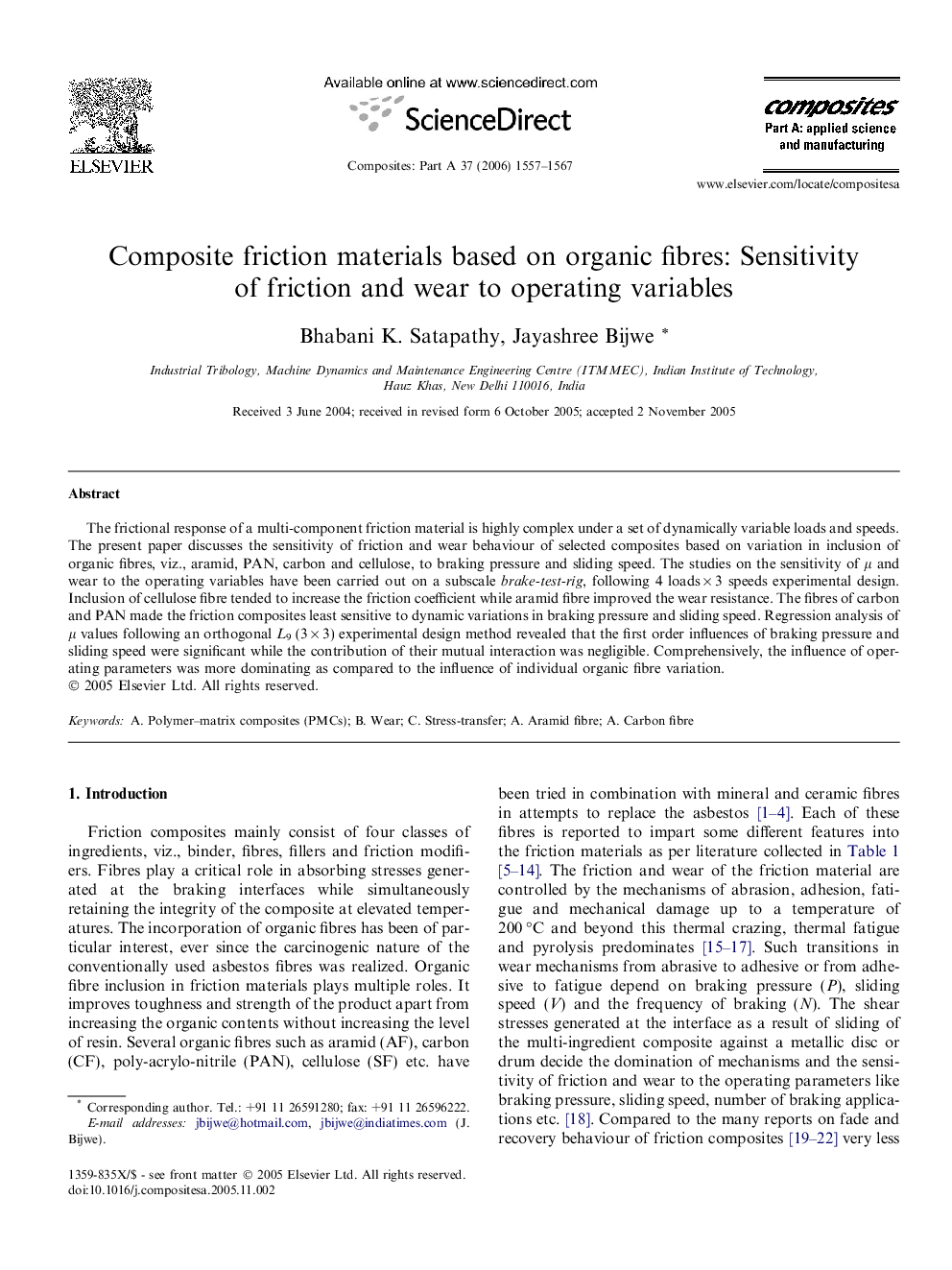| Article ID | Journal | Published Year | Pages | File Type |
|---|---|---|---|---|
| 1468203 | Composites Part A: Applied Science and Manufacturing | 2006 | 11 Pages |
The frictional response of a multi-component friction material is highly complex under a set of dynamically variable loads and speeds. The present paper discusses the sensitivity of friction and wear behaviour of selected composites based on variation in inclusion of organic fibres, viz., aramid, PAN, carbon and cellulose, to braking pressure and sliding speed. The studies on the sensitivity of μ and wear to the operating variables have been carried out on a subscale brake-test-rig, following 4 loads × 3 speeds experimental design. Inclusion of cellulose fibre tended to increase the friction coefficient while aramid fibre improved the wear resistance. The fibres of carbon and PAN made the friction composites least sensitive to dynamic variations in braking pressure and sliding speed. Regression analysis of μ values following an orthogonal L9 (3 × 3) experimental design method revealed that the first order influences of braking pressure and sliding speed were significant while the contribution of their mutual interaction was negligible. Comprehensively, the influence of operating parameters was more dominating as compared to the influence of individual organic fibre variation.
